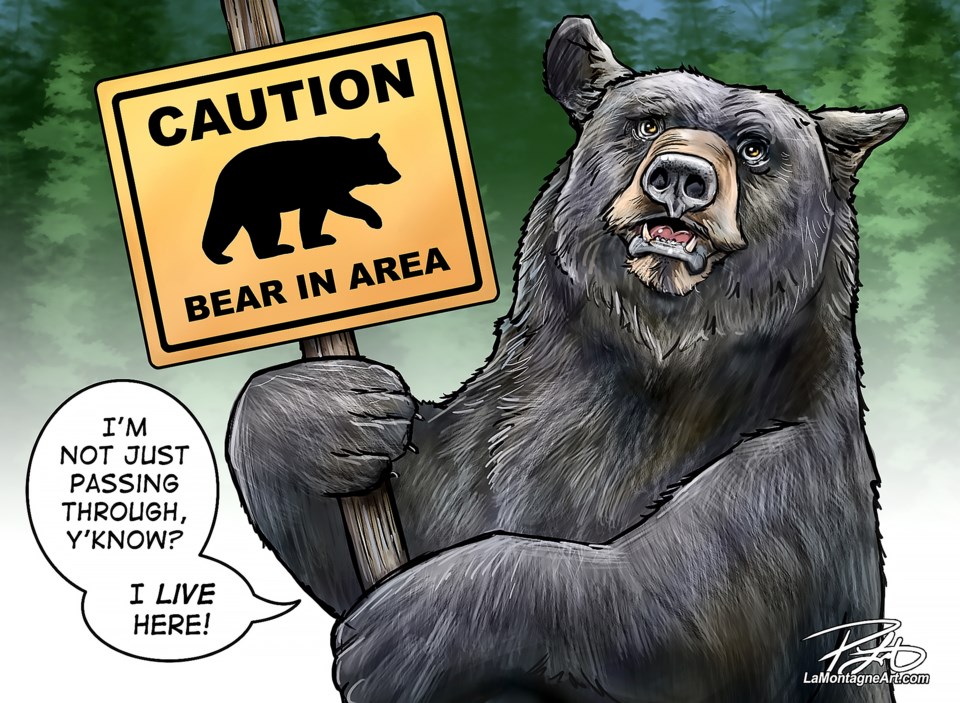It’s that time of year when hungry bears are searching for anything to replenish their appetite after a long winter of sleep.
The feasting season is well on its way as bears are unlikely to spot a growing crowd of people eager to watch them eat a few thousand berries and dandelions.
Though impressive animals, and nearly impossible to not see one without wanting to take a photo, it’s vital for people to respect the need to not linger for too long.
And anyone who has had a park warden or conservation officer cross their paths when trying to get such a photo understands the disappointment – and anger – when people potentially impact bears in their natural habitat.
Parks Canada, Alberta Parks and countless other organizations sound the alarm each spring in an effort to educate visitors and locals alike.
However, for warnings to have meaning, it takes all people working together from tourists, locals and local agencies to provide fast and up-to-date information.
While it’s easy to put up a sign or make a Facebook post, it should also be a greater priority for senior leadership of such organizations to reach out to media, make policy decisions to better protect bears and continue to increase public engagement to educate locals and visitors.
In Yoho National Park, a dangerous stretch of roughly 10 kilometres along the Trans-Canada Highway was made a no-stopping zone to allow bears the opportunity to feast on roadside greens.
The same stretch of highway from Sherbrooke Creek to Takakkaw Falls turnoff near Field had a pair of grizzly bears struck and killed by vehicles in 2022.
Parks Canada has been equally quick to add a low-level electrical current to parts of wildlife fencing in an effort to deter bears from climbing to get on the wrong side of the highway.
Municipally, Banff and Canmore have shown they’re more than willing to work with one another on advertising and education campaigns and have taken additional steps in removing fruit trees to further decrease the possibility of bears wanting to wander into residential areas.
The popular and now reopened Grassi Lakes has warnings for black bears and countless more are likely to spring up in the coming days and weeks, but the Alberta government has largely stayed quiet when it comes to preventative initiatives.
While no grizzlies have been reported killed, the threat of losing even one bear is a disaster for the local ecosystem in a province where grizzlies are threatened.
It was only in 2006 that Alberta halted the grizzly bear hunt, which has allowed populations to slowly rebound. The development growth in the province has impacted the movement of bears, while the threat of train and vehicle collisions are always real.
The human-wildlife conflicts are very real and as millions of people prepare to descend on the Bow Valley for another busy summer season, the importance of all people and organizations working together to protect wildlife is key.
It may be a small price to pay, but passing up on a chance to get one, two or 50 cell phone photos of a bear should be easily passed up for the greater good.




